Sugawara Mitsushige and Buddhism: Bodhisattva Kannon and the Middle Kingdom
Lee Jay Walker
Modern Tokyo Times
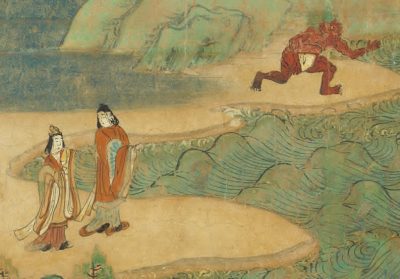
The passing of time never dampens the beauty of the thirteenth-century Japanese calligrapher Sugawara Mitsushige. Indeed, just like the words of Buddha remain timeless, then images of chapter 25 of the “Universal Gate” representing Bodhisattva Kannon equally remain timeless in the sphere of art, culture, and presentations.
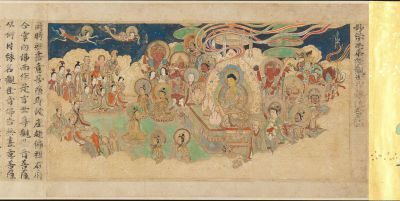
In Japan, the Bodhisattva (Bosatsu in Japan) Kannon and Bodhisattva Jizo are extremely popular deities throughout this nation. Kannon is known for amazing compassion and wisdom that forms the completeness of this Bodhisattva. Equally, Bodhisattva Jizo is revered based on love and all the positives of this world.
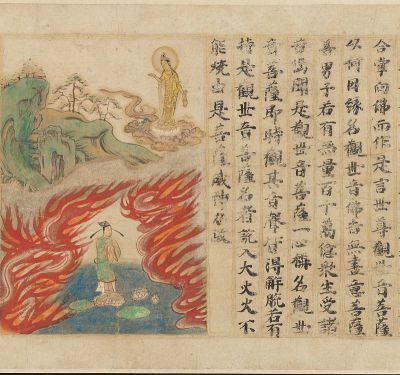
The Metropolitan Museum of Art in the United States says elegantly, “According to the calligrapher Sugawara-no-Mitsushige’s inscription, this scroll was made in the first year of the Shoka era (1257) and was modeled after a Chinese Song-dynasty printed book dated 1208. Although the compositions and the figural and architectural motifs of this version reflect Chinese pictorial traditions, it is clear that the anonymous artist inventively incorporated native Japanese (yamato-e) elements, especially in the manner of representing the landscapes and the fantastic beasts and demons.”
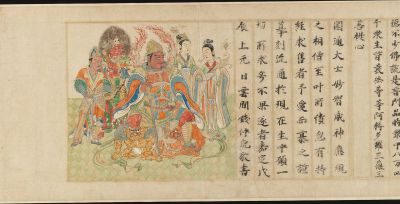
Images in this article apply to Chapter 25 of the “Universal Gate” that fuses rich cultural elements of the Middle Kingdom and the Land of the Rising Sun. Of course, the Middle Kingdom (China) played a powerful role in the cultural growth of Japan. Yet, true to Japan, and being blessed with the indigenous faith of Shintoism, then fusions and individual concepts emerged naturally from the path that was laid richly by the Middle Kingdom. Hence, despite clan rivalry within the body politic of Japan during the same period, the ongoing cultural enrichment of Kamakura, Kyoto, Koyasan, Nara, Negoro-ji, Nikko, and many other areas, continued to grow with certain future ebbs and flows based on power concentration.
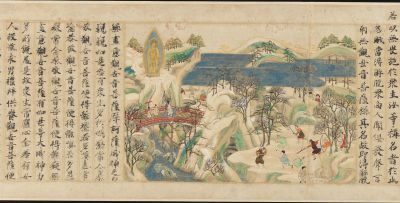
In an earlier article, I state, “Kannon seeks to deliver all humans from the world of ignorance and to end suffering. In the representations of Kannon and other aspects of the Universal Gate, you can feel the passion of Sugawara Mitsushige.”
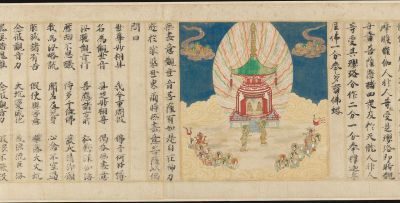
Overall, no words can suffice to explain the real beauty and meaning of the images in this article – and the same applies to the amazing compassion of Bodhisattva Kannon.

Modern Tokyo News is part of the Modern Tokyo Times group
DONATIONS to SUPPORT MODERN TOKYO TIMES – please pay PayPal and DONATE to sawakoart@gmail.com
http://moderntokyotimes.com Modern Tokyo Times – International News and Japan News
http://sawakoart.com – Sawako Utsumi personal website and Modern Tokyo Times artist
https://moderntokyonews.com Modern Tokyo News – Tokyo News and International News
http://global-security-news.com Global Security News – Geopolitics and Terrorism
PLEASE JOIN ON TWITTER
https://twitter.com/MTT_News Modern Tokyo Times
PLEASE JOIN ON FACEBOOK
https://www.facebook.com/moderntokyotimes
Some Japanese cultural articles are republished by Modern Tokyo Times to highlight the unique traits of Japan to our growing international readership.